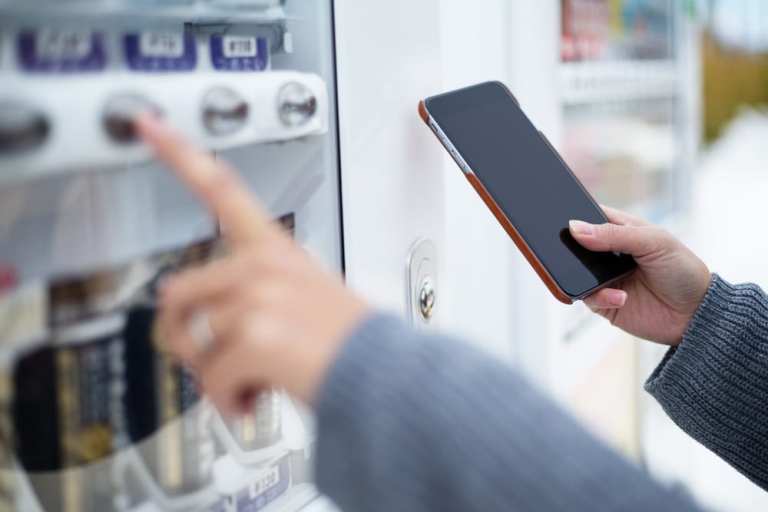Smart Vending Machines Are Going Cashless

As San Francisco recently became the latest city to outlaw cashless businesses, the future of smart vending and unattended retail may seem uncertain.
The concept of self-service is rapidly changing. Sure, vending machines where consumers can drop a handful of coins in exchange for a can of soda aren’t extinct, but tech is changing the way consumers interact with these machines.
According to the PYMNTS Unattended Retail Tracker, smart vending is expected to grow by 12 percent to 14 percent over the next few years. And the global intelligent vending machine market is on track to hit $5 billion by 2025.
Kiosks and vending machines are following consumer trends and the expectation for convenient, fast payment methods, often assisted by mobile.
Unattended retail fulfills consumer demand. It also appeals to businesses wanting to reduce staffing costs and potentially increase sales by reducing friction.
According to a study cited in the Unattended Retail Tracker, vending machines that went digital resulted in a 26 percent growth in total transactions and a 7 percent bump per transaction in the first 18 months.
Unattended retail has appeal for instant gratification and impulse buys. Smart vending machines selling earphones, clothing and cosmetics have been showing up at airports. Thanks to BreadBot, even fresh bread can be baked and sold via unattended retail.
Cashless retail hasn’t come without controversy. It can be viewed as discriminatory to unbanked and underbanked consumers, and cities like Philadelphia have joined the list of places banning the practice. Amazon Go, the poster child for cashless commerce, recently started accepting cash.
Though not commonplace, it’s possible to implement kiosks that take cash. The city of Chicago has been offering kiosks as a way to pay for utilities and parking tickets for over a decade. The ability to take cash was driven by consumers; close to half (47 percent) of all kiosk payments are made with currency and 43 percent are made with credit cards.
Not all retail models necessarily need disrupting. When a startup attempted to upend bodegas, New York’s local convenience stores, with an app and vending machine, there was an outcry and backlash.
The global kiosk market is set to increase at 6.1 percent CAGR from 2019 to 2027. And many countries are ahead of the curve. The Unattended Retail Tracker details a smart vending initiative by Reis & Irvy’s, a robotic frozen yogurt company in Australia, that partnered with cashless solutions provider Nayax to accept digital payments. The regional chain has plans to roll out 100 kiosks over this year.
And not all unattended retail lacks the human touch. As detailed in the Unattended Retail Tracker, the Benetton Group piloted a mobile point-of-sale (mPOS) system in the London location so employees can check customers out anywhere in the store and provide a digital receipt. This adds convenience, customer service and can reduce lines at checkout counters.
The future of unattended retail might stir up even more controversy, though. In China, a smart vending machine called goBox was just launched by UTStarcom and China Mobile Group. The refrigerated kiosk is powered by 5G, but no smartphones are needed to transact. Biometric payments are allowed through facial-recognition technology.
In the U.S., biometric payments can run afoul of privacy laws and there has been a predictable backlash. San Francisco hasn’t just been at the forefront of cashless payments opposition, the city also might become the first in the nation to ban facial-recognition technology for payments.